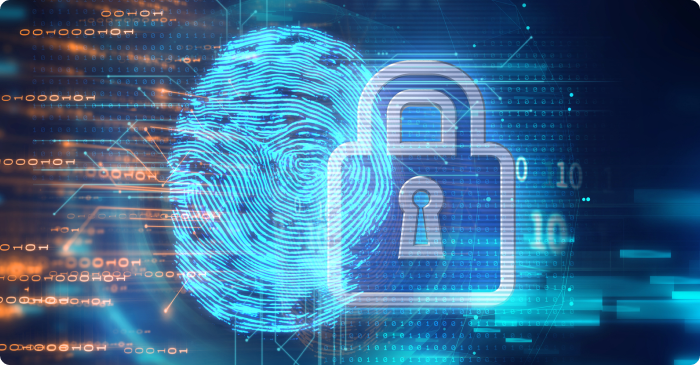Multi-Factor Authentication (MFA) helps online businesses safeguard data and user-privacy by adding more verification factors into the mix. By doing so, MFA has become a core Identity and Access Management (IAM) component today. Let’s learn more about this methodology and see if it’s enough as a stand-alone barrier?
Before diving into the specifics of MFA, it’s important to understand what Authentication is all about. It comes into play when the SaaS app or online service needs to verify that the authorized identity is the one trying to access it. This is achieved by using a combination of three layers – Possession (OTP, Magic Link, etc.), Inherence (Eye pattern, fingerprint, etc.), and Knowledge (Security questions.).
What is Multi-Factor Authentication?
Multi-Factor Authentication is elevating security standards in SaaS applications and online services by involving two or more factors. Most MFA flows involve traditional password usage, along with fingerprint, picture, or voice authentication. This methodology should not be confused with Two-Factor Authentication (2FA), which is limited only to two factors, a potential drawback.
When it comes to choosing MFA types, you’re really spoiled for choice today:
- SMS Token Authentication – Here the user gets a text message with a PIN number that needs to be inputted in the relevant login field.
- Email Token Authentication – The user in this case needs to access the inbox to fetch the code. This is also a great backup enforcement option.
- Voice Message Authentication – This mobile-centric method involves the making of a call to tell the code via an automated voice message.
- Biometric Authentication – Most mobile devices and laptops today offer biometric scanners, something that most MFA flows are now utilizing.
- Social Logins – With more and more people spending time on social media, social logins (Facebook, Google, etc.) are becoming more common.
Multi-Factor Authentication can be applied via two main ways – MFA for SaaS apps and MFA for hardware devices. The former allows users to access multiple cross-lined services, while the latter is more about specific login access. In both cases, the user has to enter the token that is associated with the specific account. For example, look at the numbers created by the Google Authenticator app.
Related: All You Need to Know About Ransomware
Top Multi-Factor Authentication Benefits
Multi-Factor Authentication is becoming a SaaS essential and this is no coincidence. It’s proving to be a formidable barrier to keep the hackers away. Just look at the recent Okta exploit, where MFA effectively prevented further escalation.
1. Financial Transaction Risk Reduction – The financial world was going digital even before the COVID-19 outbreak. This trend has introduced a wide range of security risks, something MFA is helping control.
2. Social Engineering Risk Reduction – Let’s start off with a “horror fact” – the average company faces over 700 social engineering threats every year. MFA helps stop hackers in their tracks in most of these cases.
3. Sustainable Compliance – The European Union (EU) has GDPR, the State of California has CCPA, and even the State of New York has NYDFS Cybersecurity Regulation (23 NYCRR 500). Not being compliant can result in brand damage, legal action from victims, and hefty fines by regulatory bodies. Just look at the fine British Airways had to pay after being breached.
4. Compatibility with SSO Flows – The Single-Sign On (SSO) technique is extremely popular in the SaaS space because of the cross-applications authentication it enables. MFA blends in seamlessly with these flows.
5. Lowered Password Fatigue – With users relying less on passwords, there is no friction within applications, resulting in improved customer sentiment. Also, there’s less stress on IT teams thanks to fewer password reset tickets.
Related: Top 5 Best Practices for Setting Strong Passwords
MFA and Cyber Insurance: A Solid Combo
Multi-Factor Authentication is useful and effective, but it’s far from being a silver bullet with cybercrime techniques constantly becoming more and more sophisticated. Modern MFA solutions are easy to implement and act as a good deterrent when it comes to keeping the hackers away, but they’re still not enough. No business is immune today, even with the best MFA solutions.
Here are some ways to bypass MFA solutions:
- Phishing Attacks – Usually executed via malicious emails
- Man-in-the-Middle (MitM) Attacks – Session hijacking proxy attacks
- Man-in-the-Endpoint Attacks – Usage of banking trojans for escalation
- Recovery Code Attacks – Can happen after email accounts are hacks
- Hardware Theft – Hackers can also aim to steal SIM cards or smartphones
This is where Cyber Insurance comes into play. When hackers slip through your MFA barriers, you can still stay covered and deal with it systematically. Financial losses, operational roadblocks, and brand damage will probably happen after your data is stolen. The average cyberattack costs SMBs over $25,000 on average, something that you need to take into consideration while operating your business.
Let’s zero in on ransomware, a $10 billion a year industry in 2021 alone. Dozens of cases are being reported on a monthly basis, with hackers looking for hefty cash or Bitcoin payouts. Just look at the Colonial Pipeline, Brenntag, or CWT Global cases.
More and more online businesses are now handling personal information, payment details, and other kinds of sensitive information. Financial organizations, banks, insurance firms, healthcare businesses, SaaS vendors, and other kinds of SMBs all need to think about the worst-case scenario – getting hacked. Even with MFA on board, getting Cyber Insured will cover all your bases.
